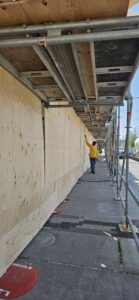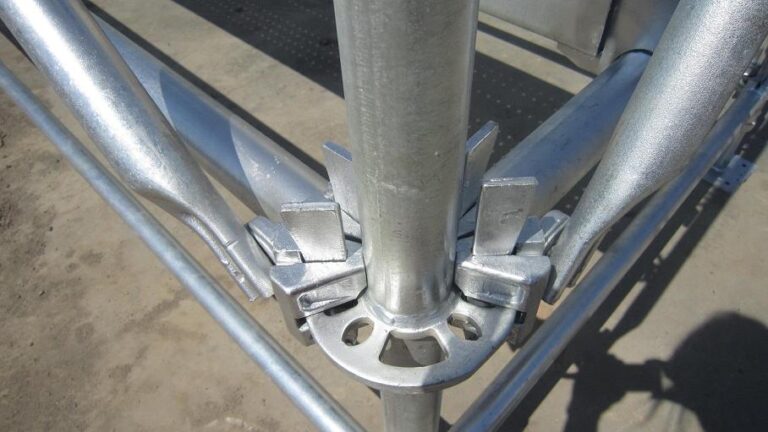Introduction
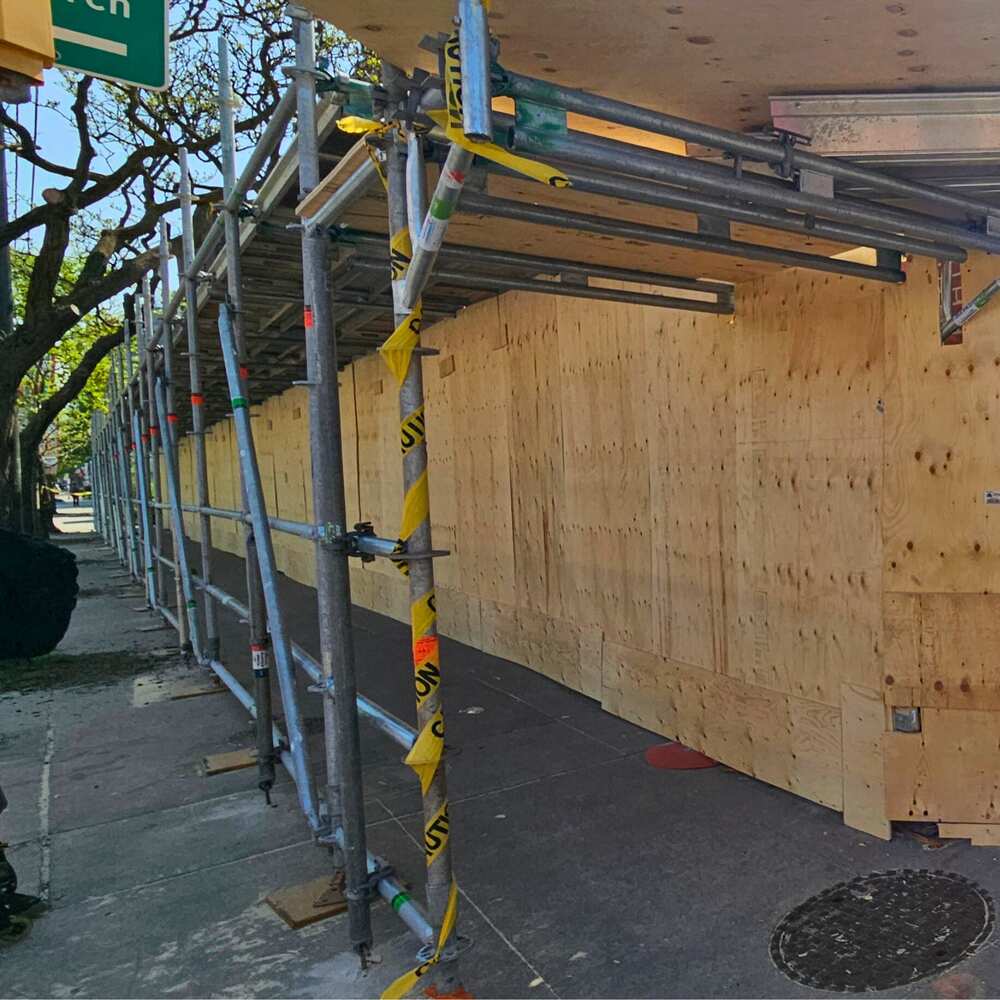
Toronto’s skyline is constantly evolving, thanks to countless construction projects underway. At the heart of these projects lies scaffolding – a temporary structure crucial for worker access and safety. However, with the convenience of scaffolding comes the responsibility of adhering to stringent safety regulations.
This comprehensive guide will walk you through Toronto’s scaffolding safety regulations, equipping you with the knowledge to ensure your projects are compliant, efficient, and most importantly, safe. Whether you’re a construction manager, site supervisor, or worker, understanding these regulations is paramount to safeguarding your team and project.
At PEAK Scaffolding, we’re not just experts in providing top-quality scaffolding solutions; we’re also committed to educating our community on the importance of safety. Let’s dive into the details of scaffolding safety in Toronto.
Why Scaffolding Safety Matters in Toronto: A Matter of Life and Business
Scaffolding-related accidents can have devastating consequences. In Ontario, falls from heights are a leading cause of workplace injuries and fatalities, and scaffolding incidents are a significant contributor to these statistics.
The repercussions of a scaffolding accident extend beyond the physical harm to workers. They can lead to costly project delays, legal battles, and damage to a company’s reputation. By prioritizing scaffolding safety, you’re not only protecting your workforce but also your bottom line.
Consider these sobering facts:
- In 2020, there were over 6,500 lost-time injuries due to falls in Ontario workplaces.
- The average cost of a fall-related injury claim in Ontario exceeds $30,000.
- Non-compliance with safety regulations can result in hefty fines and even criminal charges for employers.
Investing in proper scaffolding safety measures is a proactive step towards mitigating these risks. A safe work environment leads to increased productivity, improved morale, and a more successful project overall.
The Benefits of a Proactive Approach
When you prioritize scaffolding safety, you’re sending a clear message to your team: their well-being is paramount. This fosters a culture of safety that permeates every aspect of your project. Here’s what you can expect:
- Reduced accidents: Fewer injuries and fatalities lead to a safer work environment for everyone.
- Cost savings: Avoiding accidents means less downtime, lower insurance premiums, and fewer legal expenses.
- Enhanced reputation: A commitment to safety demonstrates professionalism and attracts top talent.
- Increased productivity: A safe workforce is a more focused and efficient workforce.
Partnering with a reputable scaffolding provider like PEAK Scaffolding can significantly enhance your safety efforts. Our experts are well-versed in Toronto’s regulations and can ensure your scaffolding systems meet and exceed all requirements.
Key Toronto Scaffolding Safety Regulations: Navigating the Legal Landscape
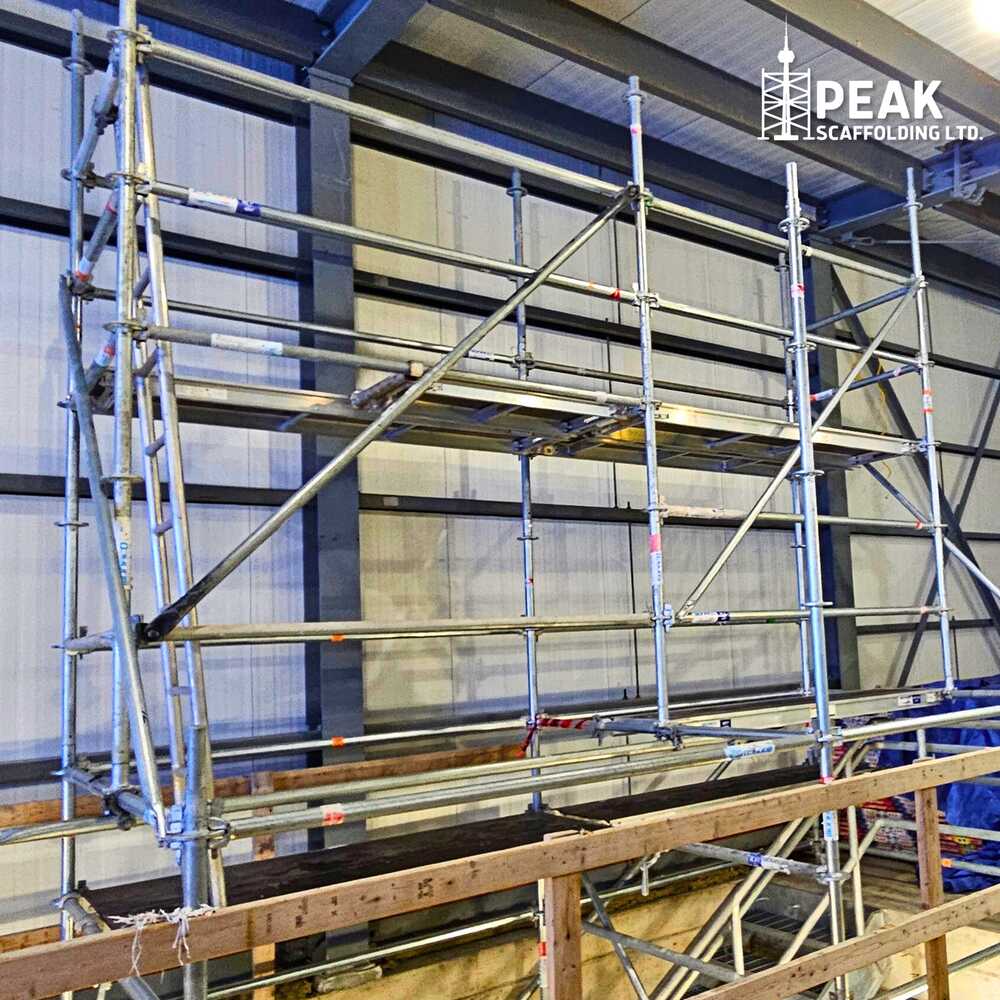
Toronto’s scaffolding safety regulations are comprehensive and designed to protect workers and the public. Understanding these regulations is essential for maintaining a safe and compliant worksite.
The Ontario Occupational Health and Safety Act (OHSA)
The OHSA is the overarching legislation governing workplace safety in Ontario. It outlines general duties for employers, supervisors, and workers to ensure a safe work environment. When it comes to scaffolding, the OHSA mandates that all equipment must be in good condition, properly maintained, and used in accordance with manufacturer instructions.
Ontario Regulation 213/91: Construction Projects
This regulation provides specific rules for scaffolding used in construction projects. Here are some key provisions:
- Design and Construction: Scaffolding must be designed by a professional engineer if it exceeds specific dimensions or load-bearing capacities. It must be built with sound materials and constructed to withstand the intended loads.
- Load Capacity: Each component of the scaffolding must be capable of supporting its own weight plus four times the maximum intended load.
- Fall Protection: Guardrails, mid-rails, and toe boards must be installed on all open sides and ends of platforms. Personal fall arrest systems may also be required depending on the situation.
- Access and Egress: Safe access must be provided to and from all work platforms. Ladders must be securely fastened and extend at least one meter above the landing platform.
- Inspections and Maintenance: Regular inspections by a competent person are mandatory. Scaffolds must be inspected before each use, after any alterations, and at specific intervals (weekly or monthly). Any defects must be repaired promptly.
Toronto Building Code
While the OHSA and Regulation 213/91 form the core of scaffolding safety regulations, the Toronto Building Code may have additional requirements. These requirements often pertain to specific types of scaffolding or unique site conditions within the city. It’s essential to consult the building code to ensure complete compliance.
Ministry of Labour, Training and Skills Development
This ministry is responsible for enforcing occupational health and safety laws in Ontario. Inspectors have the authority to visit worksites, issue orders, and even shut down projects if safety violations are found. Their goal is to ensure that all employers adhere to the regulations and provide a safe working environment for their employees.
By understanding and adhering to these key Toronto scaffolding safety regulations, you’re not only protecting your workforce but also ensuring the smooth and successful completion of your construction project.
Best Practices for Scaffolding Safety: Going Beyond the Basics
While adhering to Toronto’s scaffolding safety regulations is non-negotiable, there are additional best practices you can implement to create an even safer work environment. These practices prioritize proactive risk mitigation and foster a culture of safety on your construction site.
Pre-Planning and Risk Assessment
Before erecting any scaffolding, a thorough risk assessment is essential. Consider the following:
- Site Conditions: Evaluate the terrain, potential hazards (like overhead power lines), and any environmental factors that could impact scaffolding stability.
- Scaffold Type and Design: Choose the right type of scaffolding for the job and ensure its design is suitable for the intended load and height.
- Fall Protection: Determine the most appropriate fall protection systems based on the specific tasks being performed.
- Emergency Procedures: Establish clear protocols for evacuating the scaffold in case of an emergency.
Proper Training and Certification
All workers involved in erecting, using, or dismantling scaffolding must be adequately trained and, in some cases, certified. This includes:
- Workers: Training on safe work practices, fall protection, and hazard recognition.
- Supervisors: Additional training on scaffolding inspection, rescue procedures, and overseeing safe operations.
Regular Inspections and Maintenance
Never underestimate the importance of regular inspections. A competent person should inspect the scaffolding:
- Before each use: Check for any damage, loose components, or other hazards.
- After any alterations: Ensure that any modifications haven’t compromised the structural integrity.
- At regular intervals: Weekly or monthly inspections are typically required, depending on the type of scaffold and its usage.
Weather Considerations
Toronto’s weather can be unpredictable. Take necessary precautions when working with scaffolding during:
- High winds: Dismantle or secure scaffolding if wind speeds exceed manufacturer recommendations.
- Rain and snow: Clear platforms of any accumulation to prevent slips and falls.
- Ice: Avoid using scaffolding if ice buildup could make surfaces slippery.
Communication and Emergency Procedures
Open communication is key to a safe worksite. Ensure that all workers:
- Understand the scaffolding’s limitations and safety protocols.
- Know how to report any hazards or concerns.
- Are familiar with the emergency evacuation procedures.
By following these best practices and partnering with a safety-conscious scaffolding provider like PEAK Scaffolding, you can significantly reduce the risk of accidents and create a safer, more productive work environment.
Choosing the Right Scaffolding System: Finding the Perfect Fit for Your Project
Selecting the appropriate scaffolding system is crucial for both safety and efficiency. Different projects have varying requirements, and understanding the available options will help you make an informed decision.
Types of Scaffolding
- Supported Scaffolding: This common type relies on vertical supports (standards) resting on a solid base, with horizontal members (ledgers) and diagonal braces for stability. It’s suitable for most construction and maintenance projects.
- Suspended Scaffolding: This type is suspended from a rooftop or other overhead structure, making it ideal for work on tall buildings or where ground-level support is impractical.
- Rolling Scaffolding: Equipped with wheels, this type provides mobility and is often used for tasks like painting, drywalling, or electrical work.
Matching the System to Your Project
Consider these factors when choosing a scaffolding system:
- Height and Load Capacity: Ensure the system can safely support the intended weight and reach the required height.
- Configuration: Choose a system that can be easily configured to fit the shape and contours of your project.
- Accessibility: Consider how workers will access and move around the scaffolding.
- Duration of Use: If the scaffolding will be in place for an extended period, prioritize durability and stability.
The PEAK Scaffolding Advantage: Ringlock and Tube & Clamp Expertise
At PEAK Scaffolding, we specialize in two versatile and reliable scaffolding systems:
- Ringlock System: This innovative modular system offers exceptional strength, adaptability, and ease of assembly. It’s perfect for various applications, from general construction to complex industrial projects.
- Tube and Clamp: This traditional system provides unmatched flexibility, allowing for customization to suit any project geometry. It’s known for its durability and ability to handle heavy loads.
Our experienced team can help you assess your project’s specific needs and recommend the ideal scaffolding system to ensure optimal safety, efficiency, and cost-effectiveness.
FAQs about Scaffolding Safety Regulations in Toronto
Who is responsible for scaffolding safety in Toronto?
Scaffolding safety is a shared responsibility.
- Employers are responsible for providing safe scaffolding, ensuring it’s properly erected and maintained, and training workers on its safe use.
- Supervisors must oversee scaffolding operations, ensuring workers follow safety protocols and that inspections are carried out.
- Workers are responsible for using scaffolding safely, reporting any hazards, and following all safety instructions.
How often should scaffolding be inspected in Toronto?
Scaffolding should be inspected:
- Before each use: A visual inspection to identify any damage or hazards.
- After any alterations or extreme weather: To ensure the scaffolding remains safe and stable.
- At regular intervals: Usually weekly or monthly, depending on the type of scaffold and its usage.
What qualifications are needed to erect or dismantle scaffolding in Toronto?
Workers erecting or dismantling scaffolding over specific heights or complexities must be adequately trained and certified. Supervisors overseeing these activities also need additional training and certification.
What are the penalties for non-compliance with scaffolding safety regulations in Toronto?
Non-compliance can lead to:
- Orders: The Ministry of Labour can issue orders requiring employers to correct safety violations.
- Fines: Substantial fines can be imposed on employers and individuals for non-compliance.
- Stop-work orders: In severe cases, projects can be shut down until safety issues are addressed.
- Legal action: Employers can face criminal charges if safety violations result in serious injury or death.
Remember, investing in scaffolding safety is an investment in your project’s success and your workforce’s well-being. Don’t hesitate to seek expert guidance from a reputable provider like PEAK Scaffolding to ensure your scaffolding systems meet all safety requirements.
Related Posts
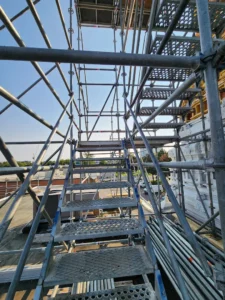

Toronto Building Codes and Scaffolding: What You Must Comply With

